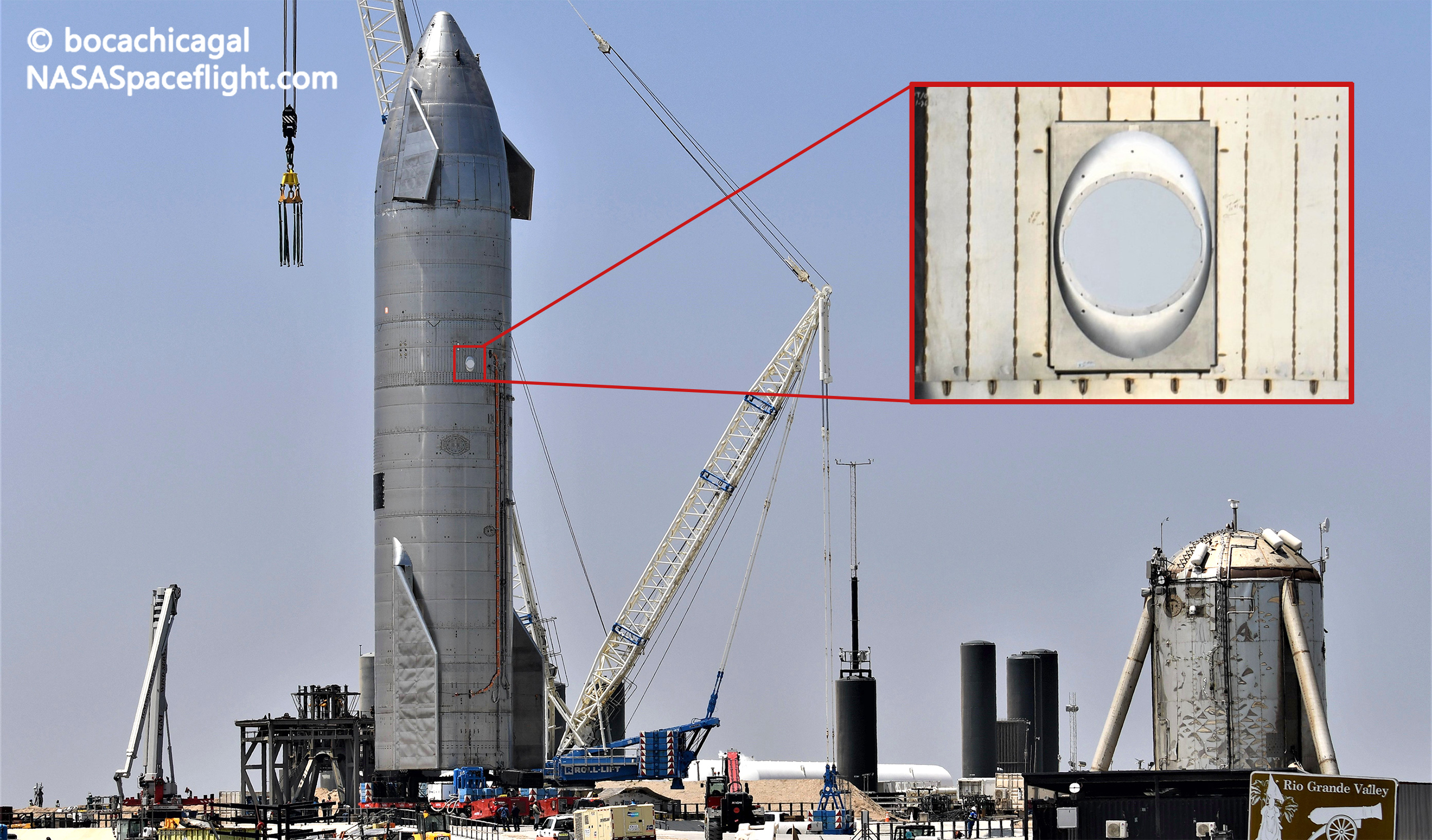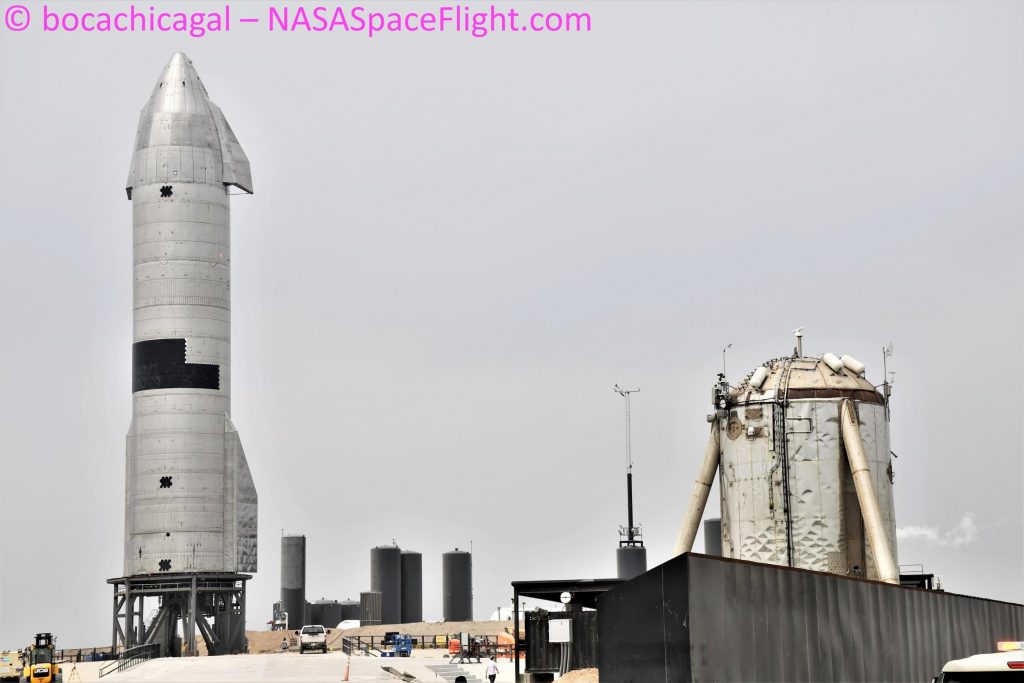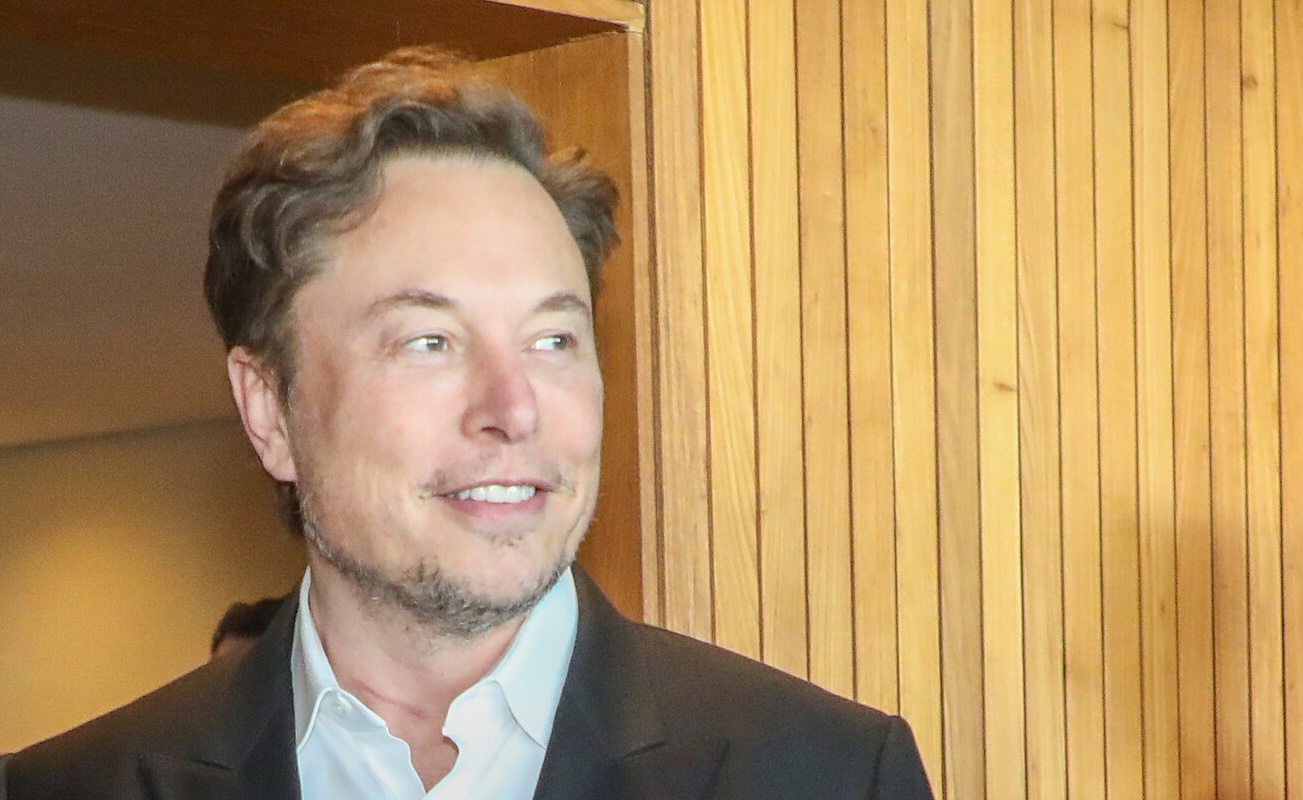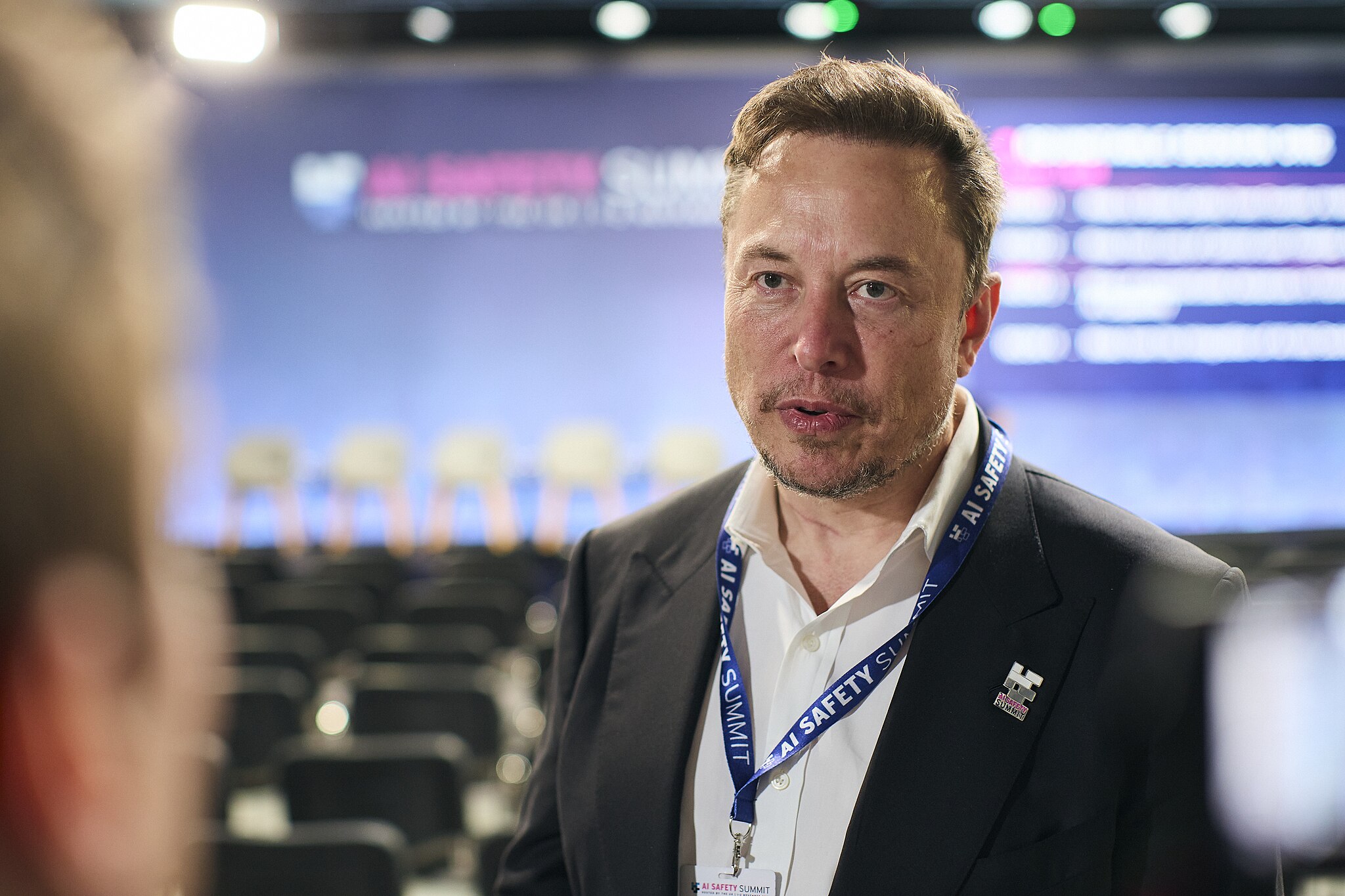

News
SpaceX installs Starlink dish on upgraded Starship prototype
In the latest in a long line of twists, SpaceX has requested permission from the FCC to operate a Starlink internet antenna installed on Starship serial number 15 (SN15).
The first in a planned batch of four or more upgraded Starship prototypes, SN15 was rolled a mile down the road from SpaceX’s South Texas factory to its suborbital launch pad late last week. Around the same time that its aft tank section was being prepped for nose installation on April 3rd, some of the first 360-degree views of the rocket revealed an unusual porthole-esque addition just above the Starship’s forward tank dome. As far back as Starhopper in 2019, Starships have used that space between tank and nosecone as an installation point for avionics, Tesla batteries, and a number of radio and GPS antennas, among other things.
The new hardware generally fell under the radar but most that took note assumed it was some kind of antenna upgrade. As it turns out, that speculation was almost certainly correct – but not in the way most expected.

When SN15’s new antenna first appeared, the author speculated that it bore a striking resemblance to a SpaceX Starlink dish. However, another forum user argued that it was more likely an upgraded S-band antenna akin to those used on SpaceX’s Falcon rockets. The author later noted that the S-band antenna pass-through located on the interstage of Falcon boosters was almost the same size as the new antenna and shroud visible on Starship SN15, seemingly closing the case.

Nine days later, SpaceX asked the FCC for permission to operate a Starlink dish (user terminal) in Boca Chica “at altitudes not to exceed 12.5 km” during operations “on the ground or during test flights.” In other words, the antenna installed on Starship SN15 is almost certainly a Starlink dish. Surrounded by an aerodynamic shroud, the antenna is firmly fixed on the rocket and would rely entirely upon cutting-edge phased array beamforming to electronically ‘steer’ itself to both transmit and receive from one or more of almost a thousand operational Starlink satellites currently in orbit.
In SpaceX’s FCC Special Temporary Authority (STA) request, the company curiously asked for the 60-day test period to begin on April 20th. Even if the FCC moves extremely quickly and grants the STA within a few days to a week of SpaceX’s April 9th request, it’s unlikely that the company would delay Starship SN15 test or launch plans by almost ten days to wait for permission to use the rocket’s new Starlink antenna. In other words, while SN15 is the first Starship to have a Starlink antenna installed, there’s a decent chance it won’t be the first to actually put that capability to the test – both on the ground or during a launch.
While unlikely, the fact that SpaceX’s Starship SN15 Starlink antenna installation is almost the same size as Falcon 9’s reliable but far more basic S-band setup also begs the question of whether success on Starship test flights could eventually lead to the addition of Starlink dishes on future Falcon boosters. Regardless, Starship SN15 is on track to kick off a busy week of qualification testing in South Texas. If the rocket suffers any significant delays, as has admittedly been the norm for Starship prototypes, there’s a good chance SN15 could begin testing its Starlink dish around the middle of next week.

Elon Musk
Elon Musk’s X will start using a Tesla-like software update strategy
The initiative seems designed to accelerate updates to the social media platform, while maintaining maximum transparency.

Elon Musk’s social media platform X will adopt a Tesla-esque approach to software updates for its algorithm.
The initiative seems designed to accelerate updates to the social media platform, while maintaining maximum transparency.
X’s updates to its updates
As per Musk in a post on X, the social media company will be making a new algorithm to determine what organic and advertising posts are recommended to users. These updates would then be repeated every four weeks.
“We will make the new 𝕏 algorithm, including all code used to determine what organic and advertising posts are recommended to users, open source in 7 days. This will be repeated every 4 weeks, with comprehensive developer notes, to help you understand what changed,” Musk wrote in his post.
The initiative somewhat mirrors Tesla’s over-the-air update model, where vehicle software is regularly refined and pushed to users with detailed release notes. This should allow users to better understand the details of X’s every update and foster a healthy feedback loop for the social media platform.
xAI and X
X, formerly Twitter, has been acquired by Elon Musk’s artificial intelligence startup, xAI last year. Since then, xAI has seen a rapid rise in valuation. Following the company’s the company’s upsized $20 billion Series E funding round, estimates now suggest that xAI is worth tens about $230 to $235 billion. That’s several times larger than Tesla when Elon Musk received his controversial 2018 CEO Performance Award.
As per xAI, the Series E funding round attracted a diverse group of investors, including Valor Equity Partners, Stepstone Group, Fidelity Management & Research Company, Qatar Investment Authority, MGX, and Baron Capital Group, among others. Strategic partners NVIDIA and Cisco Investments also continued support for building the world’s largest GPU clusters.
News
Tesla FSD Supervised wins MotorTrend’s Best Driver Assistance Award
The decision marks a notable reversal for the publication from prior years, with judges citing major real-world improvements that pushed Tesla’s latest FSD software ahead of every competing ADAS system.

Tesla’s Full Self-Driving (Supervised) system has been named the best driver-assistance technology on the market, earning top honors at the 2026 MotorTrend Best Tech Awards.
The decision marks a notable reversal for the publication from prior years, with judges citing major real-world improvements that pushed Tesla’s latest FSD software ahead of every competing ADAS system. And it wasn’t even close.
MotorTrend reverses course
MotorTrend awarded Tesla FSD (Supervised) its 2026 Best Tech Driver Assistance title after extensive testing of the latest v14 software. The publication acknowledged that it had previously criticized earlier versions of FSD for erratic behavior and near-miss incidents, ultimately favoring rivals such as GM’s Super Cruise in earlier evaluations.
According to MotorTrend, the newest iteration of FSD resolved many of those shortcomings. Testers said v14 showed far smoother behavior in complex urban scenarios, including unprotected left turns, traffic circles, emergency vehicles, and dense city streets. While the system still requires constant driver supervision, judges concluded that no other advanced driver-assistance system currently matches its breadth of capability.
Unlike rival systems that rely on combinations of cameras, radar, lidar, and mapped highways, Tesla’s FSD operates using a camera-only approach and is capable of driving on city streets, rural roads, and freeways. MotorTrend stated that pure utility, the ability to handle nearly all road types, ultimately separated FSD from competitors like Ford BlueCruise, GM Super Cruise, and BMW’s Highway Assistant.
High cost and high capability
MotorTrend also addressed FSD’s pricing, which remains significantly higher than rival systems. Tesla currently charges $8,000 for a one-time purchase or $99 per month for a subscription, compared with far lower upfront and subscription costs from other automakers. The publication noted that the premium is justified given FSD’s unmatched scope and continuous software evolution.
Safety remained a central focus of the evaluation. While testers reported collision-free operation over thousands of miles, they noted ongoing concerns around FSD’s configurable driving modes, including options that allow aggressive driving and speeds beyond posted limits. MotorTrend emphasized that, like all Level 2 systems, FSD still depends on a fully attentive human driver at all times.
Despite those caveats, the publication concluded that Tesla’s rapid software progress fundamentally reshaped the competitive landscape. For drivers seeking the most capable hands-on driver-assistance system available today, MotorTrend concluded Tesla FSD (Supervised) now stands alone at the top.
News
Elon Musk’s Grokipedia surges to 5.6M articles, almost 79% of English Wikipedia
The explosive growth marks a major milestone for the AI-powered online encyclopedia, which was launched by Elon Musk’s xAI just months ago.

Elon Musk’s Grokipedia has grown to an impressive 5,615,201 articles as of today, closing in on 79% of the English Wikipedia’s current total of 7,119,376 articles.
The explosive growth marks a major milestone for the AI-powered online encyclopedia, which was launched by Elon Musk’s xAI just months ago. Needless to say, it would only be a matter of time before Grokipedia exceeds English Wikipedia in sheer volume.
Grokipedia’s rapid growth
xAI’s vision for Grokipedia emphasizes neutrality, while Grok’s reasoning capabilities allow for fast drafting and fact-checking. When Elon Musk announced the initiative in late September 2025, he noted that Grokipedia would be an improvement to Wikipedia because it would be designed to avoid bias.
At the time, Musk noted that Grokipedia “is a necessary step towards the xAI goal of understanding the Universe.”
Grokipedia was launched in late October, and while xAI was careful to list it only as Version 0.1 at the time, the online encyclopedia immediately earned praise. Wikipedia co-founder Larry Sanger highlighted the project’s innovative approach, noting how it leverages AI to fill knowledge gaps and enable rapid updates. Netizens also observed how Grokipedia tends to present articles in a more objective manner compared to Wikipedia, which is edited by humans.
Elon Musk’s ambitious plans
With 5,615,201 total articles, Grokipedia has now grown to almost 79% of English Wikipedia’s article base. This is incredibly quick, though Grokipedia remains text-only for now. xAI, for its part, has now updated the online encyclopedia’s iteration to v0.2.
Elon Musk has shared bold ideas for Grokipedia, including sending a record of the entire knowledge base to space as part of xAI’s mission to preserve and expand human understanding. At some point, Musk stated that Grokipedia will be renamed to Encyclopedia Galactica, and it will be sent to the cosmos.
“When Grokipedia is good enough (long way to go), we will change the name to Encyclopedia Galactica. It will be an open source distillation of all knowledge, including audio, images and video. Join xAI to help build the sci-fi version of the Library of Alexandria!” Musk wrote, adding in a later post that “Copies will be etched in stone and sent to the Moon, Mars and beyond. This time, it will not be lost.”








